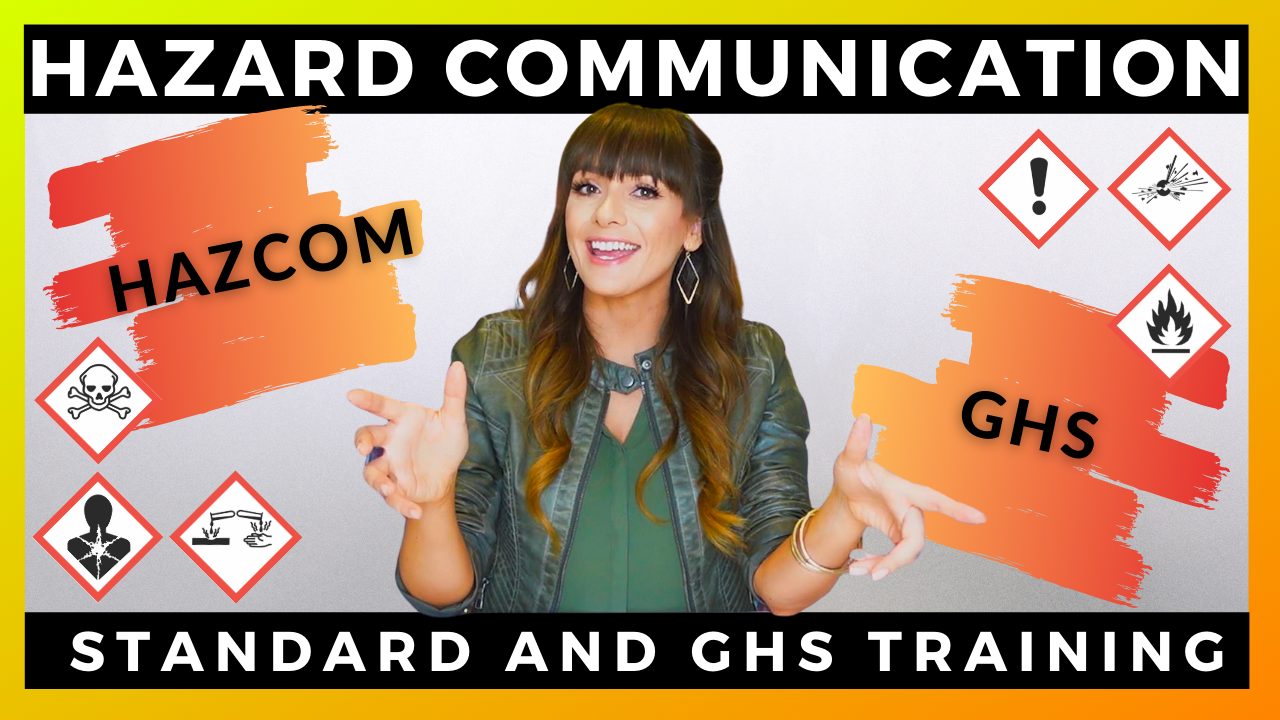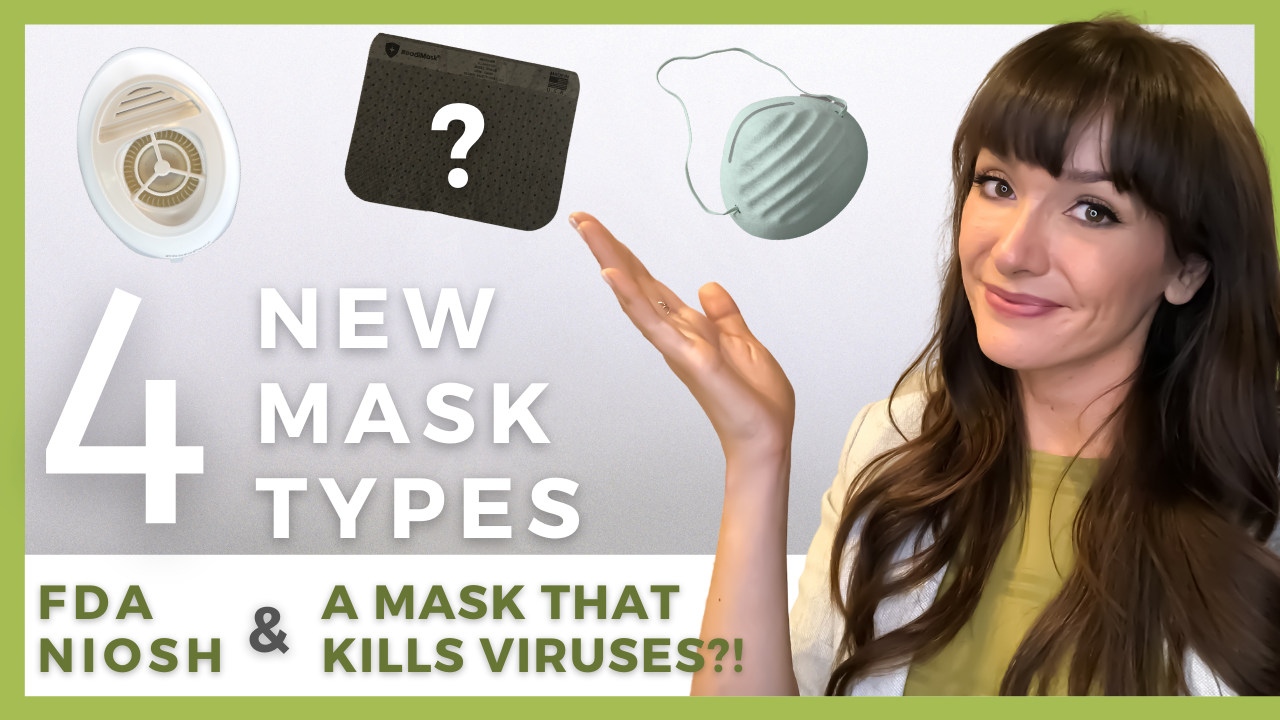When I say OSHA-compliant Hazard Communication Training, you may think:
“That sounds boring”
“Please stop talking to me”
Or
“If I zone out for the entire training, does it still count?”
But there’s more to this OSHA standard than an attention-grabbing title... a lot more.
In the United States, we as consumers, have become much more discerning about what is in the products we buy. This is true when it comes to food, home improvement, and cosmetics. But when it comes to hazardous substances in the workplace, we tend to be a bit more casual.

In this blog post, let’s talk about the Hazard Communication Standard and why it matters to you and your health.
How do you get exposed to hazardous substances?
#1 Inhalation
Inhalation is how we get exposed to things like asbestos, silica, and of course, now the coronavirus.
#2 Absorption
There's also absorption through the skin, which a lot of people tend to forget. Remember, if you can get a dose of nicotine through the skin, or birth control, or vitamins, it's just as likely that you can get a toxic exposure through your skin too.
#3 Injection
Injection habits can contribute to exposure to hazardous substances as well. This happens when we get exposed to a hazardous substance through a break or cut in the skin or when a hazardous or sharp object breaks the skin's barrier and we get exposed to whatever was on that object.
A classic example of this is when someone steps on a rusty nail and then needs to get a tetanus shot.
#4 Ingestion
Lastly, back to ingestion. Chances are if you're eating lunch in a contaminated workplace or with dirty hands, you are most likely ingesting some of whatever it is that you work with.

What do we do about that?
When it comes to hazardous substances in the workplace, we tend to leave that all up to our employer. Despite the fact that our own actions have huge implications on our own safety and health.
What's even more interesting is that we as employees only gained the right to know about the hazardous substances in our workplace in the 1980s. Before that, the work world was pretty suspect.
Life Before the Hazard Communication Standard
So, imagine back in the early days of the industrial revolution when assembly lines and manufacturing were still in their infancy. Back then, workdays were long, working conditions were terrible, and it was quite likely your work could make you sick, get you injured, or even get you killed with little to no repercussions to the employer.
One example of how the workplace was, goes back to match manufacturing in the 1800s. Back then, matches were manufactured using manual labor and white phosphorus was used to help ignite a flame.
One by one, the workers started noticing a strange trend of pain in their teeth and jaws. Some even lost their teeth first, and then their jaws started rotting away too. In many cases, doctors had to remove parts of their jaws -bear in mind, this was back in the day before anesthesia.
As more and more people came down with this strange illness, reports of disfiguration and death started circulating. Investigations revealed more than 100 cases of this same, horrific disease - and all were from employees who worked in factories that used white phosphorus in their matches.
The ailment got the name phossy jaw.

This process had subjected workers to misery, disfigurement, and even death due to the toxic nature of the substance. The workers did not know what they were working with was hazardous. Sadly, this was not unusual at the time, in fact, this was just one example of many.
Cases like these and many others finally lead to OSHA implementing the hazard communication standard in 1983. This was also known as the ‘Employee Right-to-Know Act’.
Hazard Communication Standard
The point of the Hazard Communication Standard was for employees to be informed about the hazardous substances that they're working with and be protected from those substances.
It's also the same standard that gave us things like safety data sheets (SDSs) and outlined how hazardous materials have to be labeled.
OSHA’s initiative was a huge step forward in workplace safety.
The Globally Harmonized System
But if you're like a lot of people I know, you may be thinking well that's great but have you ever tried to read an SDS?
Well, I've got good news for you there. Do you remember when we talked about the Hazard Communication Standard being the employee right-to-know standard?
Well back in 2012, the United States implemented what's known as the Globally Harmonized System aka GHS. It was a really good thing for workplace safety because although we got the right to know from the hazard communication standard, this actually gave us the right to comprehend.
What I mean by that is, they made SDS and chemical labels so much easier to understand than they had been previously. Today you don't need an advanced degree to understand what an SDS is saying.

Your Part in the Hazard Communication Program
You can make a huge impact on your health and safety just by taking an active role and looking into what the hazards of these substances actually are. Here is a list of things to keep in mind:
- Pay attention during your hazard communication training.
- Employers are required to make SDSs available for all hazardous substances in the workplace.
- It’s your right to be informed, so feel free to educate yourself about the substances you work with.
The next time you interact with a hazardous substance at work make sure that you take the right precautions to keep yourself safe and healthy.
That's what the hazard communication standard is all about.
Pin for later!




Leave a comment
All comments are moderated before being published.
This site is protected by hCaptcha and the hCaptcha Privacy Policy and Terms of Service apply.